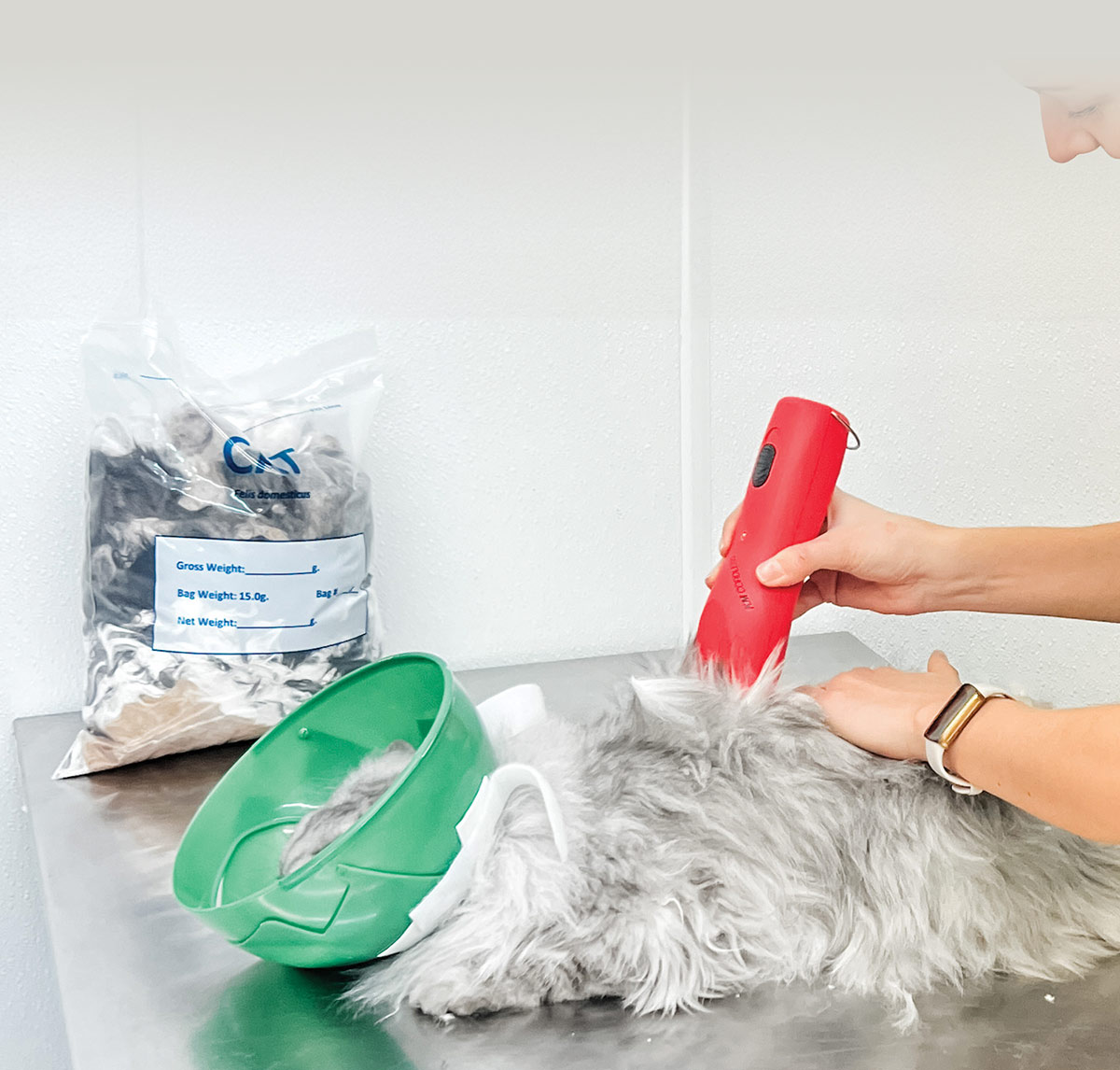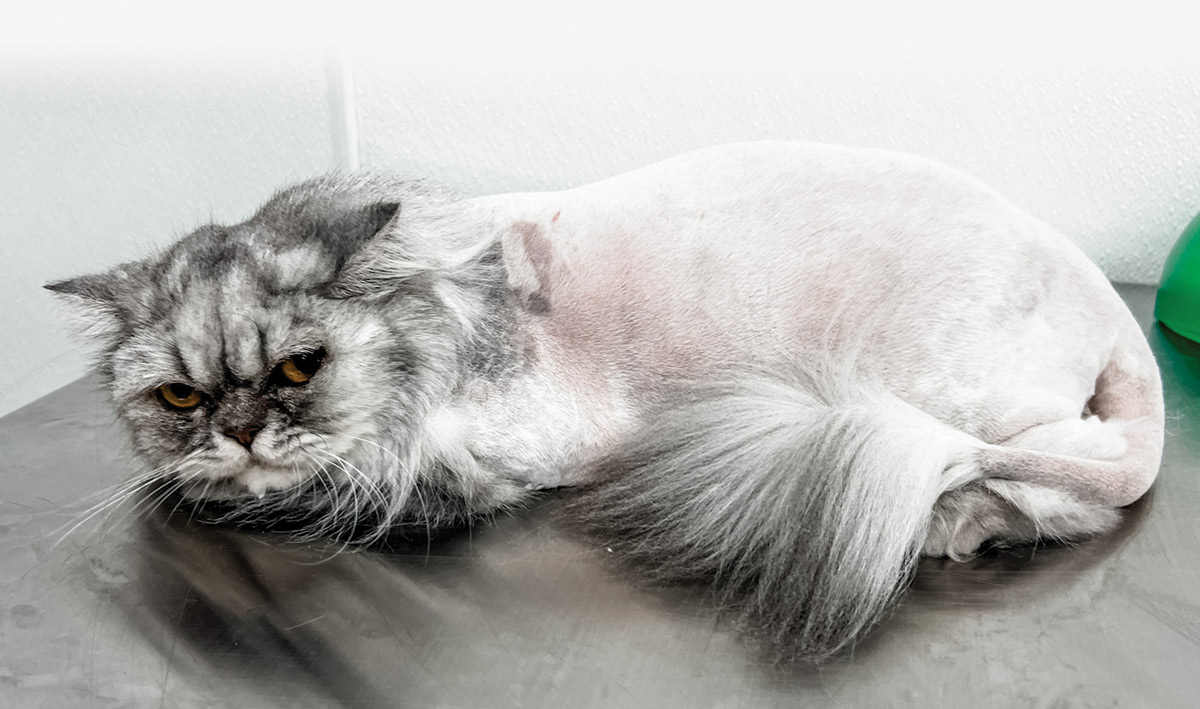
Photos provided by Lynn Paolillo
 ducating cat owners on the importance of grooming is a crucial aspect of ensuring their pets’ wellbeing. This article aims to provide cat groomers with a resource to help convey essential grooming information to cat owners, focusing on mat removal, post-grooming care, hair regrowth and the benefits of regular grooming sessions.
ducating cat owners on the importance of grooming is a crucial aspect of ensuring their pets’ wellbeing. This article aims to provide cat groomers with a resource to help convey essential grooming information to cat owners, focusing on mat removal, post-grooming care, hair regrowth and the benefits of regular grooming sessions.Understanding the Impact of Mat Removal on Cats
Additionally, cats may temporarily act aloof or irritable post grooming; however, they typically return to their normal selves within a day. If you notice any concerning symptoms like lethargy or refusal to eat, consult your veterinarian.
Removing mats from a cat’s coat is often more than just a cosmetic procedure; it can reveal underlying skin issues such as redness, irritation, bruising and even severe wounds.
Removing mats from a cat’s coat is often more than just a cosmetic procedure; it can reveal underlying skin issues such as redness, irritation, bruising and even severe wounds.

Several factors influence how quickly a cat’s hair will regrow, including:
 Age and health status
Age and health status Hair type
Hair type Diet
Diet Coat condition
Coat condition Skin condition
Skin condition Season/time of year
Season/time of year Method of mat removal
Method of mat removal
Older cats and those with health issues may experience slower or uneven hair growth. And depending on the hair type, guard hairs will sometimes grow faster than the undercoat. Healthy cats with clean skin and coat tend to regrow hair more quickly, although seasonal changes can affect this process. For some cats, particularly long-haired breeds, full regrowth of both length and density can take up to 18-24 months.
Regular grooming not only keeps your cat looking their best but also contributes significantly to their overall wellbeing.

Preventing mats from forming is key to maintaining your cat’s comfort and health. Regular grooming appointments can address your cat’s specific needs, keeping their coat in optimal condition. The frequency of these appointments varies depending on several factors, including, but not limited to, your cat’s coat type, their behavior during grooming and your grooming goals.
A basic grooming session every four to eight weeks should include:
 Nail trimming
Nail trimming Ear and eye cleaning
Ear and eye cleaning A warm bath and blow-dry
A warm bath and blow-dry Thorough combing
Thorough combing
Additional services such as haircuts, sanitary trims (particularly for long-haired or obese cats), deshedding treatments or nail caps may be recommended based on your cat’s needs and your grooming objectives. These services can influence the grooming schedule, ensuring your cat remains in excellent condition without requiring extensive at-home grooming.
Discussing your cat’s grooming schedule with a professional cat groomer will help you understand the best approach to maintaining their coat’s health and appearance. Regular grooming not only keeps your cat looking their best but also contributes significantly to their overall wellbeing.
As cat groomers, our role extends beyond the grooming table; it involves educating cat owners on the nuances of their pet’s grooming needs and the importance of regular care. By sharing this knowledge, we empower owners to make informed decisions that enhance their cat’s health, comfort and quality of life. Encouraging an open dialogue about grooming practices, health signs to watch for post grooming and the benefits of a consistent grooming schedule can greatly improve the grooming experience for cats and their owners alike.

